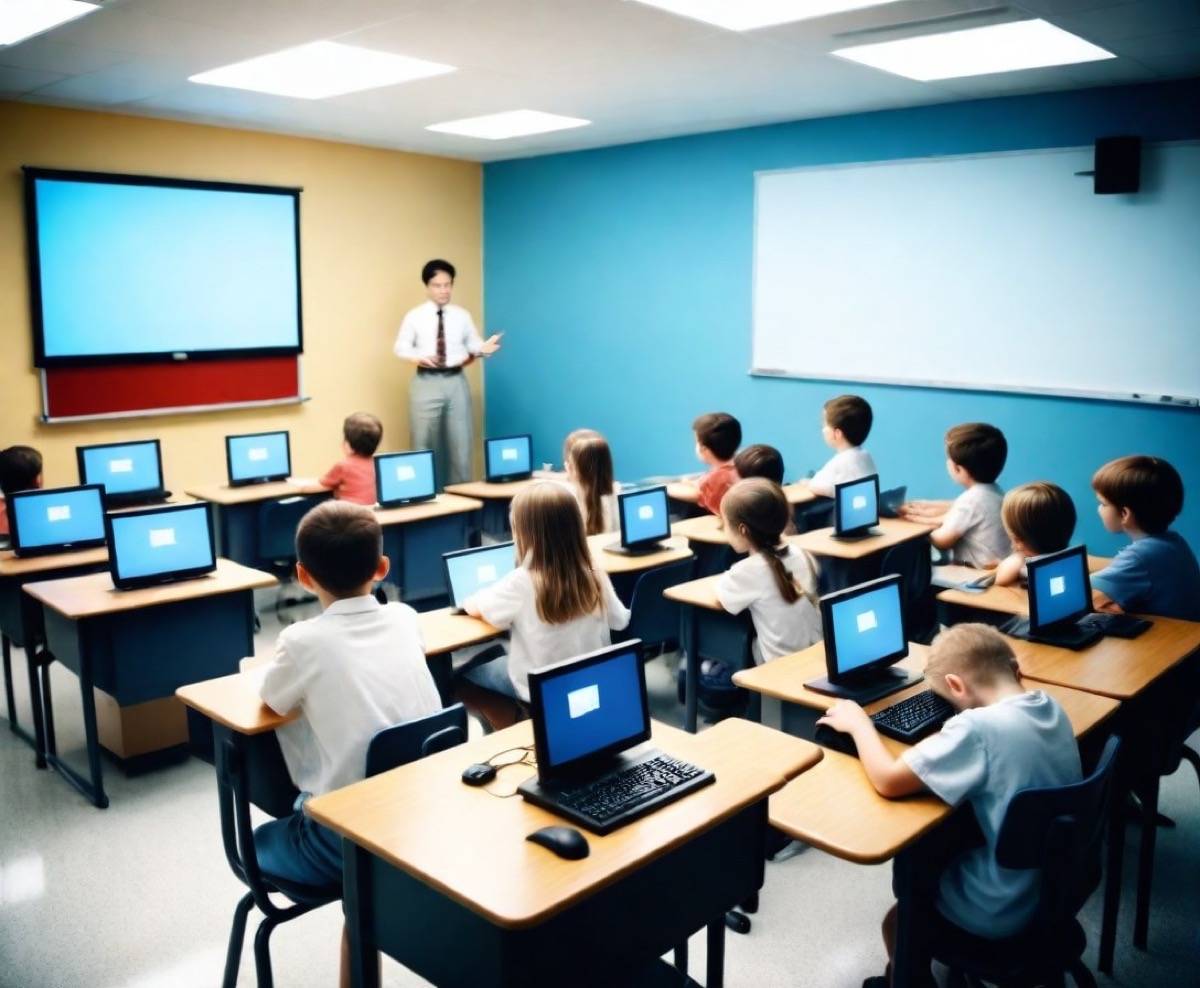Discover the most innovative tools revolutionizing classroom engagement. From interactive whiteboards to virtual reality, explore new ways to inspire and engage students.
In today’s fast-paced world, educators are constantly seeking innovative classroom tools to fully engage students and enhance their learning experience. As technology continues to evolve, traditional teaching methods are being complemented by a wide array of cutting-edge tools that captivate students’ attention and foster a deeper understanding of the subject matter. From interactive smart boards to virtual reality simulations, these tools provide educators with exciting opportunities to create dynamic and immersive learning environments that inspire curiosity, critical thinking, and active participation. In this article, we explore some of the most effective and groundbreaking classroom tools that are revolutionizing the way students engage with their studies. In today’s digital age, there are numerous innovative tools and technologies that can greatly enhance student engagement in the classroom. These tools not only make learning more interactive and enjoyable, but they also cater to different learning styles and preferences. In this article, we will explore some of the most popular classroom tools that are revolutionizing education and increasing student engagement.
Interactive Whiteboards
Interactive whiteboards are a staple in many classrooms, as they offer a wide range of features and benefits for both teachers and students. These large touch-sensitive displays allow teachers to present information in a more dynamic and interactive way compared to traditional blackboards or whiteboards. With interactive whiteboards, teachers can use various multimedia resources, such as videos, images, and interactive software, to engage students and reinforce key concepts.
Some of the key features of interactive whiteboards include the ability to annotate and highlight content, the option to save and share lesson materials digitally, and the opportunity for collaborative learning through group activities. These features not only make lessons more engaging, but they also promote active participation and interaction among students.
Popular interactive whiteboards include SMART Board, Promethean Board, and Clevertouch. These whiteboards offer a wide range of educational tools and resources, such as interactive lessons, educational games, and assessment tools, to further enhance student engagement and learning outcomes.
Tablets and Mobile Apps
Tablets and mobile apps have become increasingly popular in classrooms due to their portability, versatility, and wide range of educational apps available. Tablets provide students with a hands-on learning experience and allow them to access a wealth of educational resources right at their fingertips.
The benefits of using tablets in the classroom are numerous. Firstly, tablets offer personalized learning experiences, as students can choose apps that cater to their individual interests and learning needs. Additionally, tablets promote independent learning and self-paced instruction, as students can explore educational apps at their own pace and receive immediate feedback on their progress.
There are a plethora of educational apps available for students across various subjects and grade levels. Some of the top educational apps include Khan Academy, Quizlet, Duolingo, and Scratch. These apps offer interactive lessons, quizzes, flashcards, and projects that foster engagement and deeper understanding of the subject matter.
Augmented Reality
Augmented reality (AR) is an emerging technology that merges the real world with virtual elements, enhancing the learning experience and captivating students’ attention. AR allows students to interact with virtual objects and environments, bringing abstract concepts to life and making learning more immersive and engaging.
By incorporating AR into the classroom, teachers can create interactive and memorable learning experiences. For example, students can use AR apps to explore historical landmarks, dissect virtual organisms, or visualize complex scientific concepts. This hands-on and visual approach to learning not only improves student engagement, but it also helps students grasp difficult concepts more effectively.
There are various AR tools available specifically designed for education, such as Aurasma, Quiver, and Anatomy 4D. These tools provide a seamless integration of AR into the curriculum, allowing teachers to create customized AR experiences that cater to their students’ learning needs.
Virtual Reality
Similar to augmented reality, virtual reality (VR) is a technology that transports students to virtual environments, creating immersive and interactive learning experiences. VR devices, such as VR headsets, allow students to explore virtual worlds, visit historical sites, or conduct experiments in a safe and controlled environment.
The use of virtual reality in the classroom increases student engagement by providing a unique and unforgettable learning experience. Students can dive deep into topics like astronomy, geography, and history, truly experiencing the subject matter firsthand. VR also promotes empathy and understanding, as students can step into the shoes of different characters or explore different cultural contexts.
Popular virtual reality tools for education include Google Expeditions, Nearpod VR, and Oculus Rift. These tools offer a wide range of educational experiences and simulations that bring subjects to life and engage students in a whole new level of learning.
Gamification
Gamification is the use of game elements and mechanics in non-game contexts, such as education. By incorporating gamification into the classroom, teachers can transform learning into an engaging and interactive experience that motivates and challenges students.
One of the key benefits of incorporating gamification in education is increased student motivation. By introducing elements such as point systems, leaderboards, and badges, teachers can tap into students’ intrinsic motivation and drive them to actively participate in learning activities. Gamification also promotes collaboration and healthy competition among students, fostering a sense of community and engagement in the classroom.
There are various gamification tools specifically designed for education, such as Kahoot, Classcraft, and Minecraft: Education Edition. These tools provide teachers with the ability to create interactive quizzes, quests, and simulations that make learning fun and engaging for students.
Digital Learning Platforms
Digital learning platforms are online tools and platforms that provide a comprehensive and interactive learning environment for students. These platforms offer a wide range of features and advantages that enhance student engagement and promote personalized learning.
One of the key features of digital learning platforms is the ability to access a wealth of educational content and resources. Students can access interactive lessons, videos, quizzes, and educational games that cater to their individual learning needs and preferences. Additionally, digital learning platforms provide opportunities for collaboration and communication among students, enabling them to work together on projects and share ideas.
Popular digital learning platforms for classrooms include Google Classroom, Schoology, and Edmodo. These platforms offer seamless integration with other digital tools, such as Google Drive and Microsoft Office, and provide teachers with the ability to track student progress, deliver personalized feedback, and create interactive assignments and assessments.
Collaborative Tools
Collaborative tools are online platforms and applications that facilitate collaborative learning and teamwork among students. These tools enable students to work together, communicate effectively, and share ideas and resources.
One of the primary benefits of using collaborative tools in the classroom is the development of essential 21st-century skills, such as communication, collaboration, and critical thinking. Through collaborative activities, students learn how to work in teams, solve problems collectively, and listen to different perspectives. Collaborative tools also promote active participation and engagement among students, as they provide opportunities for peer feedback, discussion, and reflection.
Examples of collaborative tools for classroom use include Google Docs, Padlet, and Flipgrid. These tools allow students to collaborate on documents, create digital posters, and record and share videos, fostering a sense of community and engagement in the classroom.
Adaptive Learning Systems
Adaptive learning systems are personalized learning platforms that adapt to each student’s individual needs and progress. These systems use advanced algorithms and data analytics to deliver customized learning experiences that cater to students’ unique learning styles and abilities.
One of the key advantages of adaptive learning systems is their ability to provide immediate feedback and remediation. As students work through lessons and assignments, the system analyzes their responses and adapts the content and difficulty level accordingly. This personalized approach to learning promotes active engagement and ensures that students are challenged at their optimal level.
Popular adaptive learning platforms include Khan Academy, DreamBox, and IXL. These platforms offer a wide range of interactive lessons, quizzes, and assignments that adapt to each student’s progress, providing targeted instruction and support.
Interactive Response Systems
Interactive response systems, also known as clickers or student response systems, are devices or software that enable students to respond to questions or polls in real-time. These systems promote active participation and increase student engagement by allowing students to actively interact with the lesson content.
With interactive response systems, teachers can pose questions or prompts and receive immediate feedback from students. This real-time feedback not only allows teachers to gauge student understanding, but it also encourages all students to actively participate and contribute to the discussion. Interactive response systems can be used for quizzes, polls, and class discussions, making lessons more interactive and engaging.
Examples of interactive response systems include Poll Everywhere, Socrative, and Nearpod. These tools offer multiple question types, such as multiple-choice, open-ended, and drawing, providing teachers with a wide range of options for engagement.
Video Conferencing Tools
Video conferencing tools have become increasingly important in education, especially in remote or distance learning settings. These tools allow teachers and students to connect and collaborate in real-time, regardless of their physical location.
The advantages of using video conferencing in education are numerous. Firstly, video conferencing allows for virtual field trips and guest speakers, exposing students to new perspectives and experiences. Additionally, video conferencing promotes collaboration and teamwork, as students can work together on projects and presentations using video conferencing platforms. Moreover, video conferencing enhances classroom collaboration, as it enables students to connect with peers from different locations and engage in discussions and debates.
Examples of video conferencing tools for student engagement include Zoom, Microsoft Teams, and Google Meet. These tools offer features such as screen sharing, breakout rooms, and virtual backgrounds, creating an immersive and collaborative learning environment.
In conclusion, innovative classroom tools are revolutionizing education by increasing student engagement and promoting active participation. From interactive whiteboards to virtual reality devices, these tools offer a wide range of features and benefits that cater to different learning styles and preferences. By incorporating these tools into the classroom, teachers can create dynamic and immersive learning experiences that foster a love for learning and enable students to reach their full potential.


